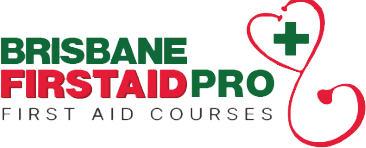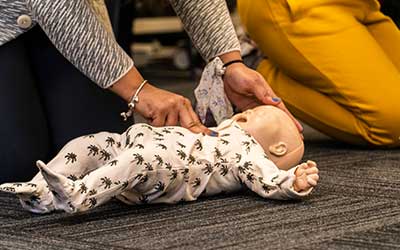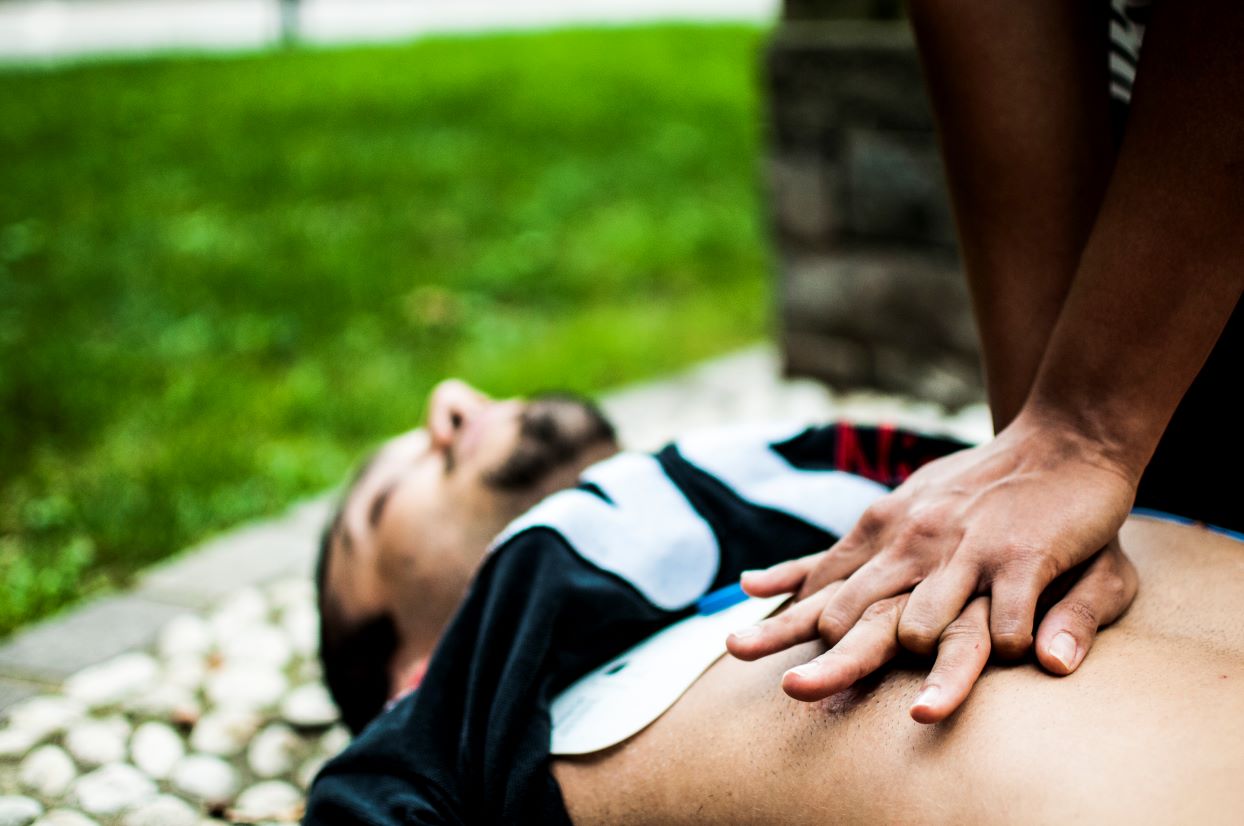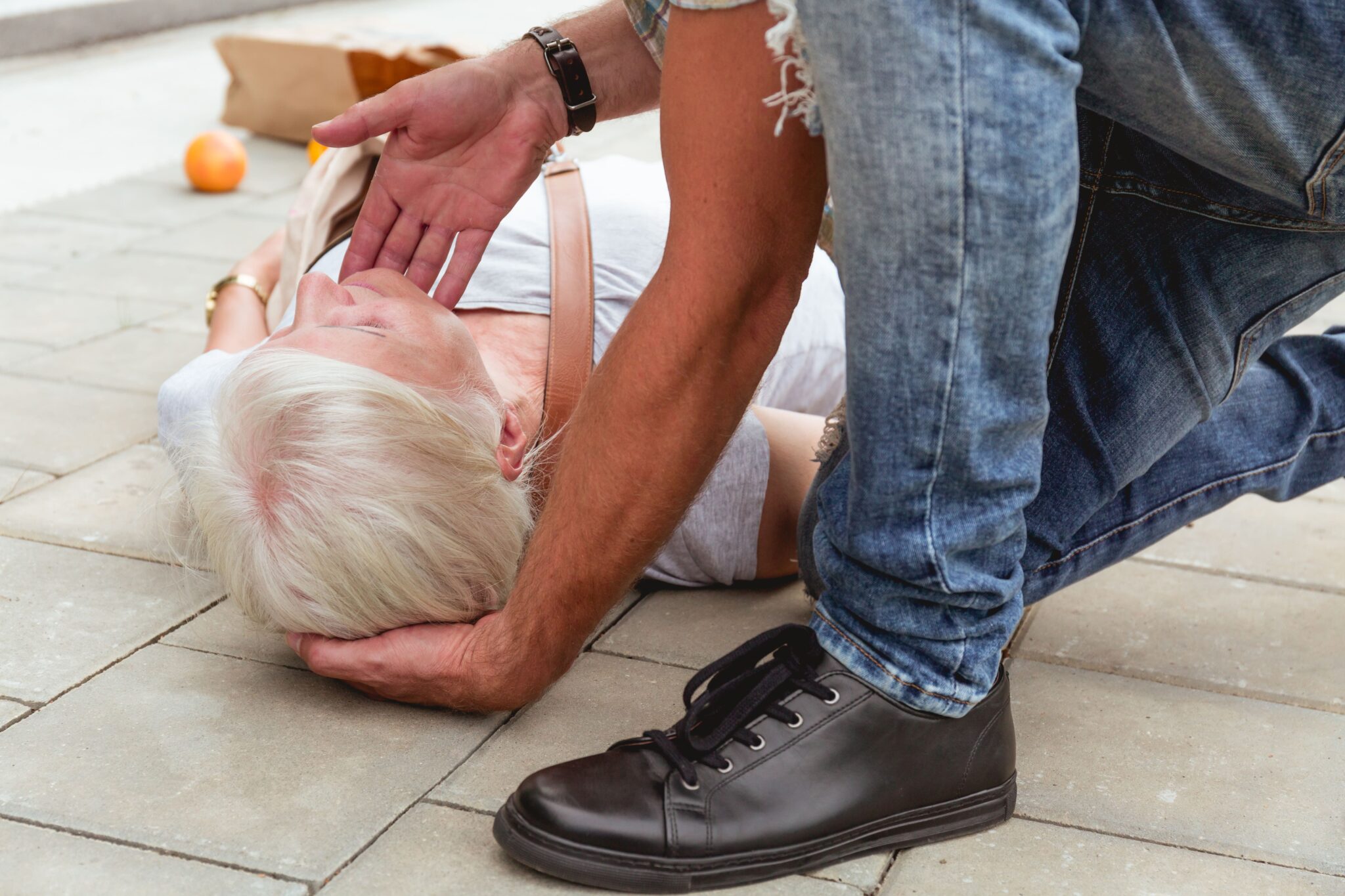Introduced in 2008, hands-only cardiopulmonary resuscitation (CPR) revolutionised emergency response for untrained bystanders witnessing a sudden cardiac arrest (SCA). Over a decade later, emerging research suggests that this method may indeed be the most effective approach for those without formal training.
To equip you for such critical situations, this guide delves into the advantages and disadvantages of hands-only CPR compared to conventional CPR techniques.
Want to be fully prepared for any accident or emergency? Enrol in an accredited and nationally recognised First Aid Course at First Aid Pro today. A few hours of training can make a difference for a lifetime.
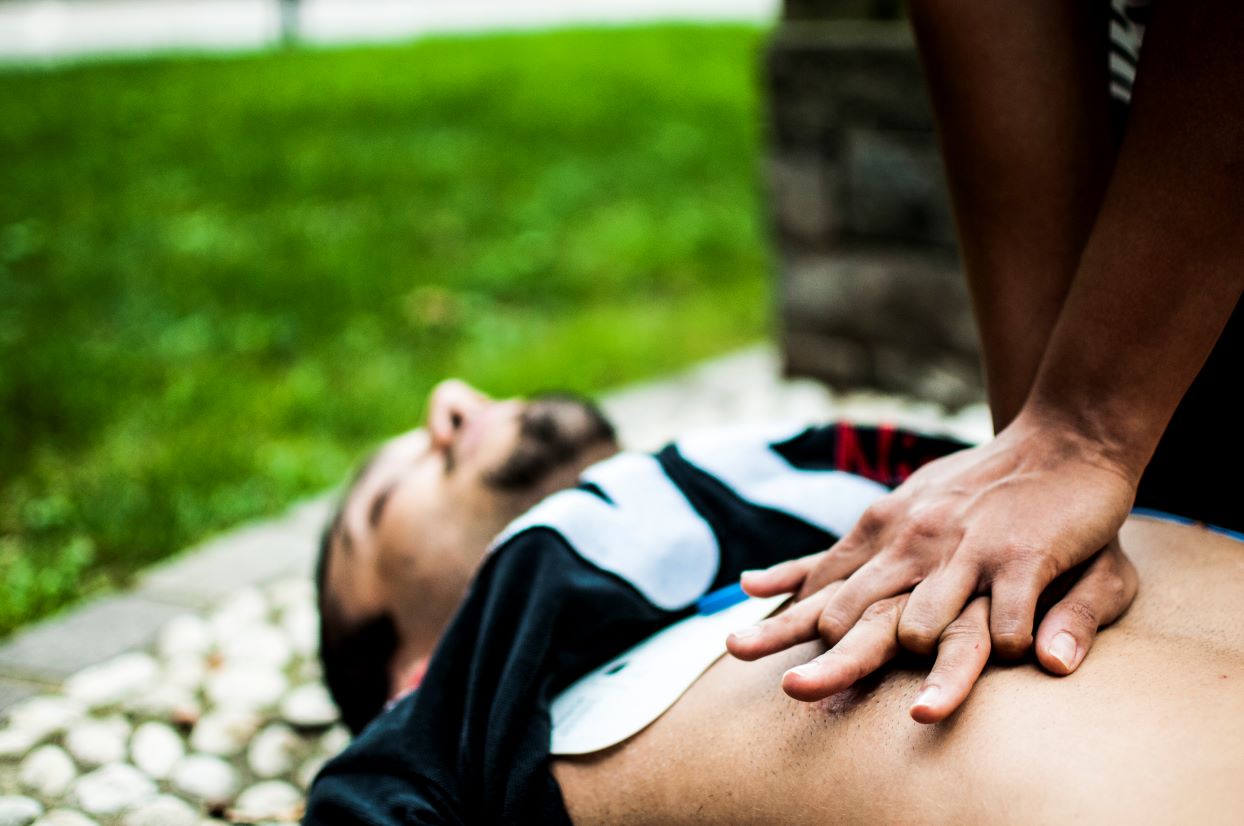
Bystander Response Rates
The American Heart Association (AHA) identifies a lack of confidence as a primary reason why bystanders often hesitate to administer CPR during cardiac emergencies.
The readiness of bystanders to act is crucial, yet many are unsure of the correct procedures. Hands-only CPR, focusing solely on chest compressions, is simpler to learn and execute compared to methods including rescue breaths. Additionally, a high-quality automated external defibrillator (AED), can assist in guiding a user through the process.
U.S Research revealed that in 2017, only about 46% of individuals experiencing cardiac arrests outside of hospitals received CPR from bystanders. Given that CPR can potentially double or triple survival chances, the AHA fervently advocates for more bystander intervention during such crises.
Become an effective first aid responder by enrolling in a nationally recognised CPR training course today.
CPR Readiness in Australia Across Various Demographics
In Australia, the inclination to administer CPR varies across diverse groups. A study focusing on basic life support training and attitudes within multi-ethnic communities in New South Wales highlighted that a significant portion of Australian residents had undergone CPR training.
The study also reported higher instances of previous CPR training among those born in Australia compared to migrants. It was observed that migrants were considerably less likely to be willing to perform CPR on a stranger.
One of the primary obstacles to obtaining CPR training identified in the study was a general lack of awareness. This research also showed that the upshot of this lack of training was that only 40% of Australians in cardiac arrest receive bystander CPR before the ambulance arrives.
Understanding the Role of Chest Compressions
In instances of sudden cardiac arrest, the affected individual’s heart ceases to beat normally, their pulse vanishes, and they no longer breathe. Survival chances in such scenarios, particularly outside of a hospital, are slim without immediate intervention from a bystander.
Once the heart stops, maintaining blood flow to essential organs becomes critical to prevent organ failure until emergency services arrive. This is where chest compressions play a crucial role, and immediate action by bystanders can be lifesaving.
The Role of Rescue Breaths in Traditional CPR
Traditional CPR encompasses both chest compressions and rescue breaths, typically in a 30:2 ratio. Rescue breaths are designed to oxygenate the blood by filling the lungs with air, which is then circulated throughout the body with the subsequent chest compressions.
The choice between hands-only CPR and traditional CPR often depends on the victim’s age and the specific circumstances. The American Heart Association acknowledges hands-only CPR as effective for teenagers and adults. However, traditional CPR, which includes both breaths and compressions, is advised in certain situations:
- Cardiac arrest in infants and children
- Drowning incidents
- Drug overdoses
- Cardiopulmonary arrests caused by respiratory issues
- Prolonged cardiac arrest scenarios
Rescue breathing is particularly crucial for infants and children, although chest compressions should still be the priority if one is unsure about performing rescue breaths correctly.
Effectiveness of Hands-Only CPR in Emergencies
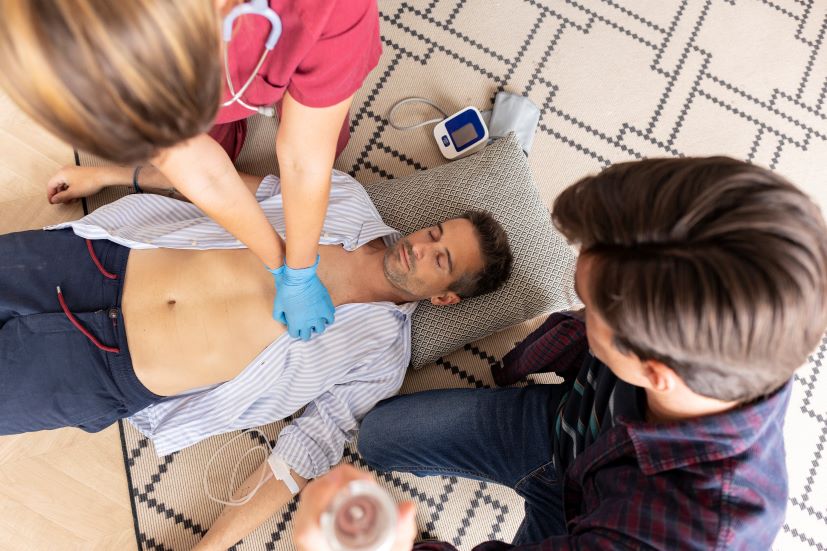
Contrary to what one might assume, studies have shown that hands-only CPR can be more effective than traditional CPR in cases of cardiac arrest outside of a hospital, at least for adults and teenagers.
This is because in cases where a teenager or adult experiences a sudden cardiac arrest, they typically retain sufficient oxygen to sustain their vital organs initially. Administering strong and rapid chest compressions can effectively circulate blood to the heart and brain. Research indicates that Hands-Only CPR, performed in the initial minutes following a cardiac arrest, is equally effective as traditional CPR that includes breaths.
Notably, the SOS-KANTO Study Group discovered that hands-only CPR can lead to improved neurological outcomes for patients.
An analysis of three separate randomised trials found a higher survival rate at hospital discharge for sudden cardiac arrest (SCA) patients who received hands-only CPR, compared to those who underwent traditional CPR involving both breaths and compressions. Similar findings have emerged from other studies as well.
The superiority of hands-only CPR in certain scenarios is attributed to several factors:
- Bystanders are generally more confident in performing hands-only CPR.
- The quality of mouth-to-mouth resuscitation is often subpar.
- Significant time is lost during attempts at mouth-to-mouth resuscitation.
These comparative outcomes are quite telling. Multiple observational studies have deduced that untrained bystanders are better off administering hands-only CPR rather than trying traditional CPR. This stance is backed by major health organisations like the American Heart Association (AHA), the American College of Cardiology, and the American Society of Anesthesiology.
Administering Hands-Only CPR in Emergencies
Witnessing someone suddenly collapse can often indicate a sudden cardiac arrest (SCA). With around 25,000 to 30,000 SCAs happening annually outside hospitals in Australia, many in public spaces like airports and sports arenas, your prompt action as a bystander could be crucial in saving a life.
Ensuring Safety and Consciousness
Prior to starting hands-only CPR, ensure the surrounding area is safe. First Aid Pro teaches the DRSABCD protocol in all emergency situations.
DRSABCD is a mnemonic that outlines a series of actions to guide individuals through the first aid process. It’s a structured approach for first aid providers to assess and assist a person who is ill or injured. This method helps in evaluating the level of danger, determining the need for resuscitation, and making decisions about the initiation and execution of CPR.
The letters DRSABCD stands for Danger, Response, Send for help, Airway, Breathing, CPR, and Defibrillation. Each component represents a critical and often detailed step in the first aid procedure.
The following chart will help you remember the correct procedure for assessing and responding in a critical incident:
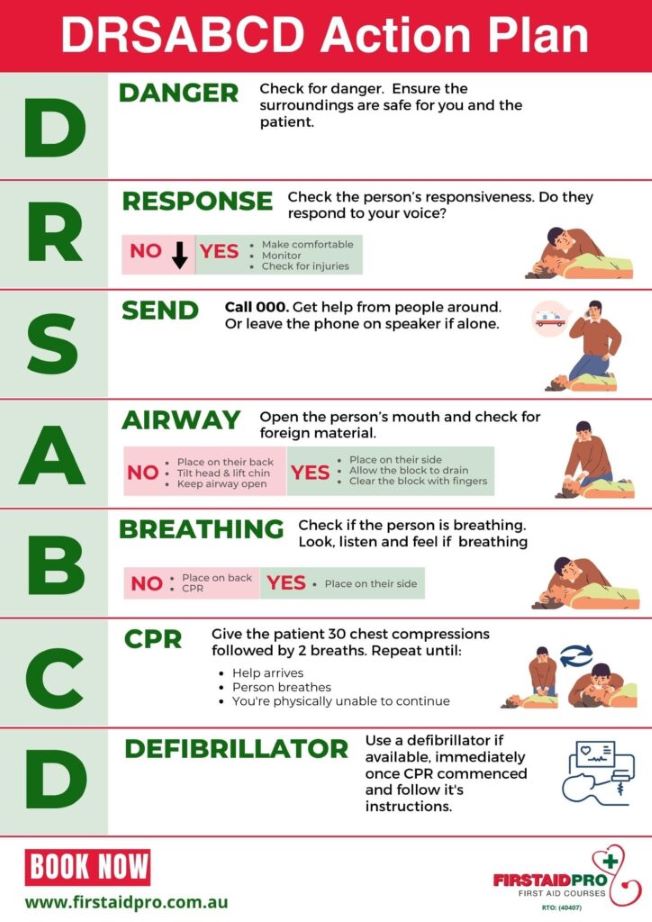
To check the person’s consciousness, speak loudly and clearly to them, and gently shake them to elicit a response.
Call for Assistance
If there’s no response, instruct one bystander to call Triple Zero (000) or your local emergency services and another to fetch an AED (automated external defibrillator) if available nearby. If you’re alone, call 000 immediately for an adult, or after two minutes of CPR for an infant or child under eight.
Check for Breathing
CPR is necessary when the victim is not breathing. Observe their chest for rising and falling and watch their nose and mouth for airflow. Absence of normal breathing or only occasional gasps means it’s time to start chest compressions.
Performing Chest Compressions
Chest compressions are vital to maintain blood circulation until emergency services or a defibrillator arrives. Here’s how to perform hands-only CPR:
- Gently roll the victim onto their back.
- Remove any clothing obstructing their chest.
- Kneel beside them, placing the heel of one hand in the center of their chest, on the breastbone. Position your other hand on top, interlocking your fingers.
- Press down firmly and repeatedly at a rate of 100 to 120 compressions per minute, akin to the rhythm of “Stayin’ Alive” by the Bee Gees. The compression depth should be:
- About 2-2.4 inches (5 to 6 cm) for adults (use two hands).
- Around 2 inches (5 cm) for a child (one or two hands).
- Approximately 1.5 inches (4 cm) for an infant (two fingers).
- Ensure the chest recoils completely between compressions.
Continue compressions until emergency responders or an AED is available.
The Basic Steps for Performing CPR with Rescue Breaths
- Check for Safety and Responsiveness: Make sure the area is safe, then check the person’s responsiveness.
- Call for Help: If unresponsive and not breathing normally, immediately call for emergency medical assistance.
- Open the Airway: Position the person on their back, tilt their head back, and lift their chin to open the airway.
- Check for Breathing: Observe for normal breathing by looking, listening, and feeling. If absent, proceed to give rescue breaths.
- Give Rescue Breaths: Pinch the person’s nose shut, create a complete seal over their mouth, and administer two rescue breaths, each lasting about one second, ensuring the chest rises.
- Perform Chest Compressions: Place the heel of one hand on the center of the chest, interlock fingers with the other hand, and perform 30 chest compressions at a rhythm of 100 to 120 compressions per minute.
- Repeat the Cycle: Continue alternating between 30 chest compressions and 2 rescue breaths until the person begins to breathe or until emergency responders arrive.
Note: Proper training in CPR is crucial for the correct and effective performance of these steps.
When to Opt for Hands-Only CPR
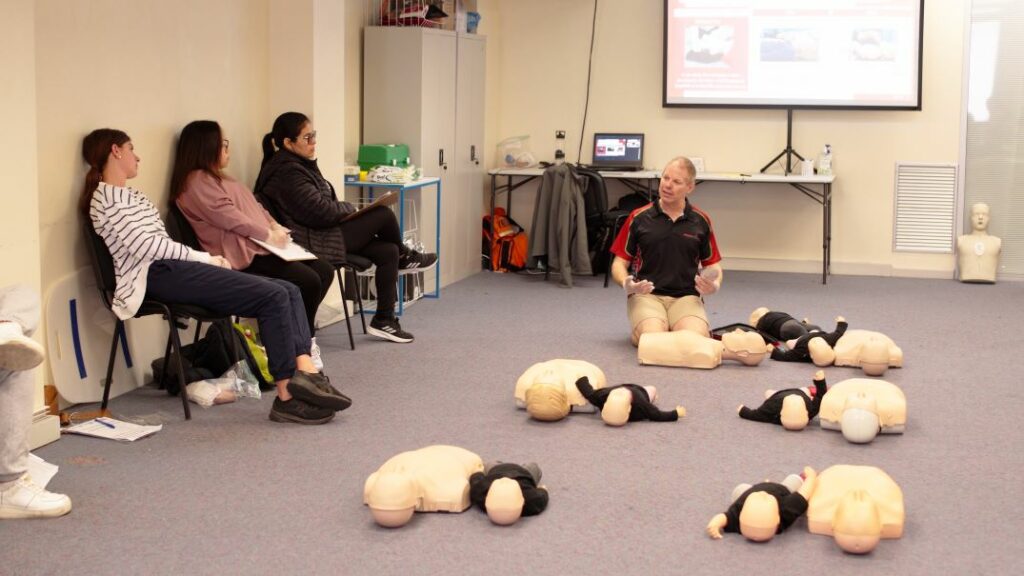
There are specific circumstances where hands-only CPR is the most appropriate response. Being familiar with this simpler form of resuscitation is crucial for these particular situations:
Risk of Contagion
In scenarios where there’s a risk of infectious disease transmission, such as during the COVID-19 pandemic, mouth-to-mouth resuscitation is not recommended. First responders during such times are advised to focus on chest compressions to avoid the risk of infection for both the victim and the rescuer.
If a bystander has access to a sterile CPR mask equipped with a one-way valve, they might still perform mouth ventilation if they are trained in CPR or basic life support. Nevertheless, even those with training may prefer chest compressions to minimise the risk of infecting the victim.
Outdated Training of the Bystander
Effective bystander CPR, especially when including rescue breaths, demands precision. For rescue breathing to be efficient:
- The victim’s chin must be lifted, and their head slightly tilted back.
- The rescuer must fully cover the victim’s nasal passages with their cheek.
- The victim’s chest should visibly rise with each inhaled breath.
Incorrect technique renders ventilation ineffective and can consume valuable time that would be better used for chest compressions. If a bystander hasn’t updated their CPR training in over five years, sticking to hands-only CPR is advisable.
Maximising Survival Chances in Cardiac Emergencies
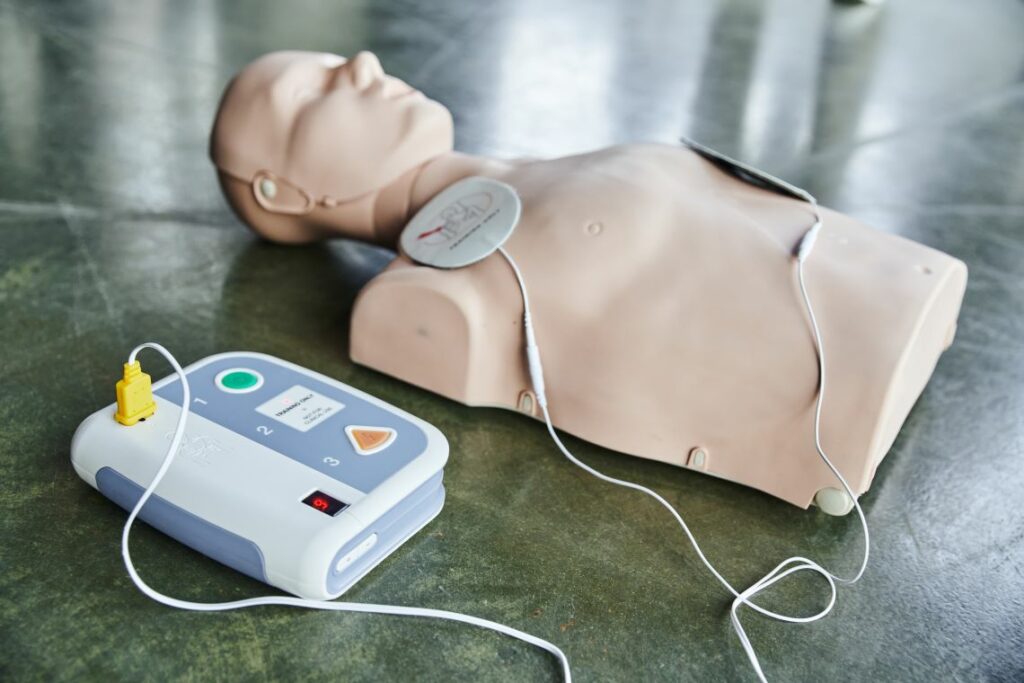
Ideally, everyone would be proficient in CPR, practicing regularly to perfect their technique. However, the reality is different, and hands-only CPR serves as an effective method to engage bystanders in emergencies. When deciding between hands-only CPR and traditional CPR, consider these points:
- Is the individual a teenager or adult who collapsed suddenly and was observed doing so?
- Is there a risk of infectious disease transmission?
- Is your CPR training outdated?
If you answer “yes” to any of these, initiate hands-only CPR immediately while instructing another bystander to call Triple Zero and locate the nearest AED. The AED will guide you through defibrillation steps, assess the patient’s heart rhythm, and deliver an electric shock if needed. If the rhythm is not shockable, the AED will advise against delivering a shock and to continue CPR.
In cases involving infants, children, victims of drowning, drug overdose, respiratory issues, or prolonged unconsciousness (over 5 minutes), and if you are recently trained in CPR, perform traditional CPR with rescue breaths. This gives the patient the best chance of survival. If you’re not trained, continue chest compressions until someone with recent CPR training is available.
Remember, in sudden cardiac arrest situations, every second is vital, and any form of CPR can increase the likelihood of survival. In any doubt between hands-only and traditional CPR, begin chest compressions and call Triple Zero (000). In emergencies, anyone can provide life-saving cardiovascular care, and your actions could be critical in saving a life.
In Summary
In the journey through understanding the nuances of hands-only CPR versus traditional CPR techniques, it’s clear that being equipped with the right knowledge and skills can make a monumental difference in emergency situations. Hands-only CPR, a simpler and often more accessible form of life-saving intervention, stands as a crucial skill, especially for untrained bystanders. Its effectiveness in specific scenarios, such as with adults and teenagers suffering from sudden cardiac arrest, is backed by substantial research and endorsed by leading health organisations.
The critical role of bystanders in emergency situations cannot be overstated. With the prevalence of sudden cardiac arrests outside hospital settings, the immediate response of a bystander can indeed tilt the balance between life and death. Understanding when and how to apply hands-only CPR, particularly in circumstances where risk of infection is high or when one’s training in traditional CPR is outdated, is key.
Moreover, the incorporation of AEDs in the CPR process adds another layer of effectiveness to bystander response, offering guided assistance in emergencies. However, it’s essential to recognise the scenarios where traditional CPR, inclusive of rescue breaths, is more appropriate, especially in cases involving infants, children, or specific emergencies like drowning or drug overdose.
First Aid Pro hopes that this guide will also serve as a call to action for everyone to learn and stay updated with accredited CPR training. Whether it’s hands-only CPR or the traditional method, your preparedness to step forward in an emergency can significantly impact survival rates. Remember, in the critical moments of a cardiac arrest, any attempt at resuscitation is better than none, and your intervention as a bystander could be the vital link in the chain of survival.
